There were only three launches this past week — an SBIRS satellite for the United States government, an ocean-monitoring satellite for the Chinese government, and the very successful launch of a Virgin SpaceShip suborbital plane. Plus, this week in rocket history, we look back at the first crewed Skylab mission.
Media
Transcript
Hello, and welcome to the Daily Space. My name is Annie Wilson and most weekdays the CosmoQuest team is here putting science in your brain.
Today, however, is for Rocket Roundup. Let’s get to it, shall we?
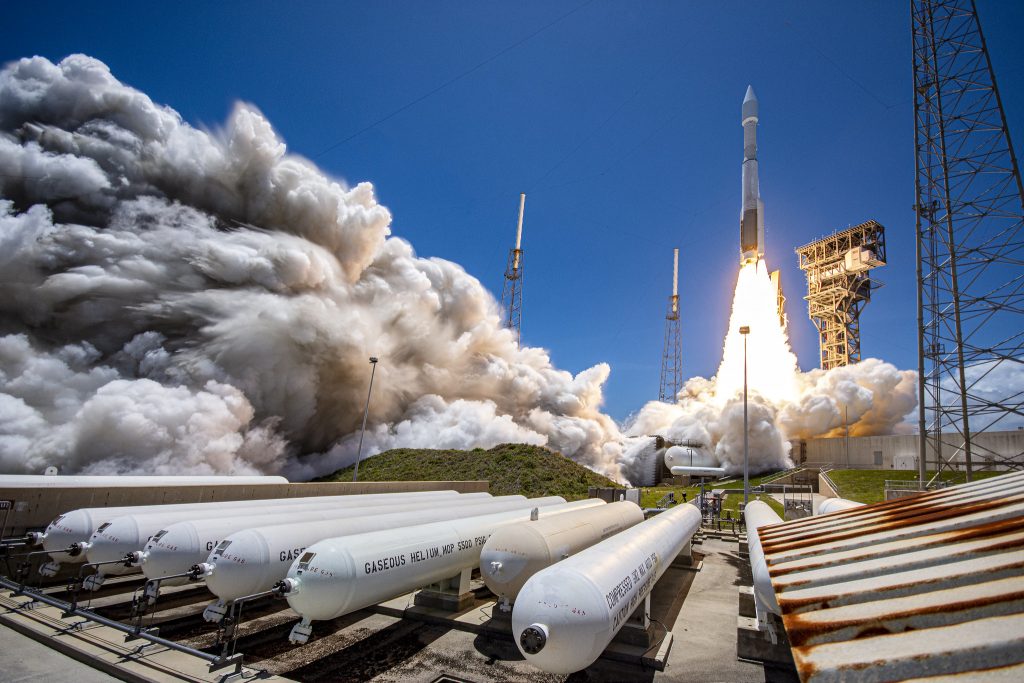
For our first launch this week, on May 18 at 17:31 UTC, an Atlas V 421 launched the SBIRS GEO-5 mission into geostationary transfer orbit from SLC-41 at Cape Canaveral Space Force Station in Florida. The 421 in the rocket name means that the Atlas V has a four meter payload fairing on top of its Centaur upper stage, two solid boosters on the first stage, and a single RL-10 engine on the second stage Centaur.
SBIRS stands for Space Based Infrared System, and is the current system used by the US government to detect intercontinental ballistic missile launches. It replaces the Defense Support Program which was launched in the 1970s. SBIRS uses two different sensors: a scanning sensor and a staring sensor. The scanning sensor is used to provide “quicker revisit time” over wide areas and the staring sensor is used to look at smaller areas for longer times.
Next up, on May 19 at 04:10 UTC, a Long March 4B launched the Haiyang 2D satellite into orbit from the Jiuquan Satellite Launch Center in northern China.
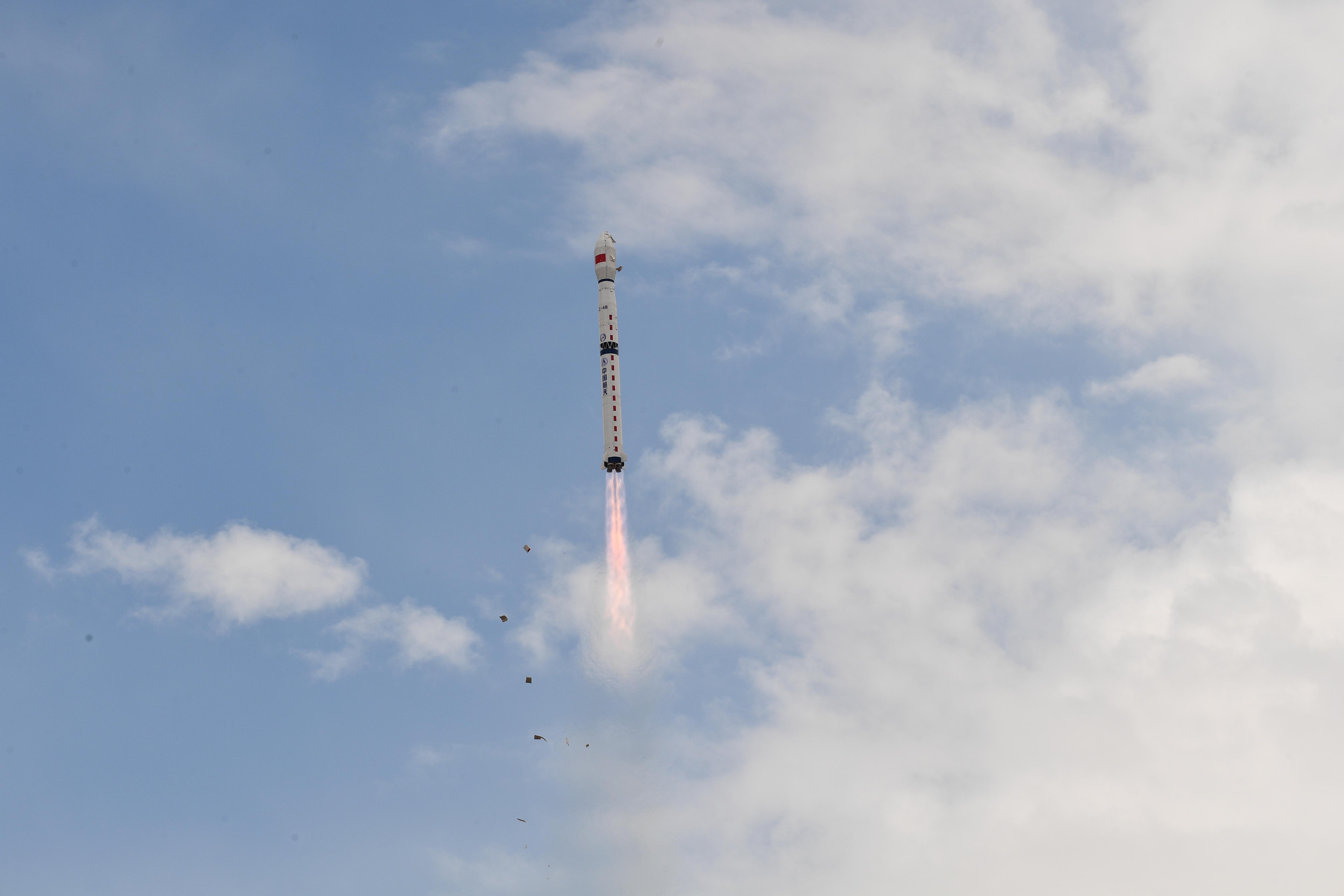
The purpose of the satellite is to monitor the dynamic ocean environment with microwave sensors to detect sea surface wind, height and temperature. It does this with an altimeter (which measures altitude), and a scatterometer — a specialized type of active radar optimised to determine the direction of wind over large bodies of water. Both instruments work by sending out radar pulses to the ocean and recording the reflections. The altitude, wind speed and direction are a function of the returned energy. A rough ocean surface returns a stronger signal because the waves reflect more of the radar energy back toward the scatterometer antenna. A smooth ocean surface returns a weaker signal because less of the energy is reflected.
For our last launch of the week, we have another notable “space” flight. On May 22, the Virgin SpaceShip Unity suborbital plane made its twentieth flight. This was the first successful powered flight of the vehicle from its new base at Spaceport America, New Mexico.
The major goals of the flight were to test the upgraded horizontal stabilizer, collect data for their FAA license, and do a bit of science while they were at it.
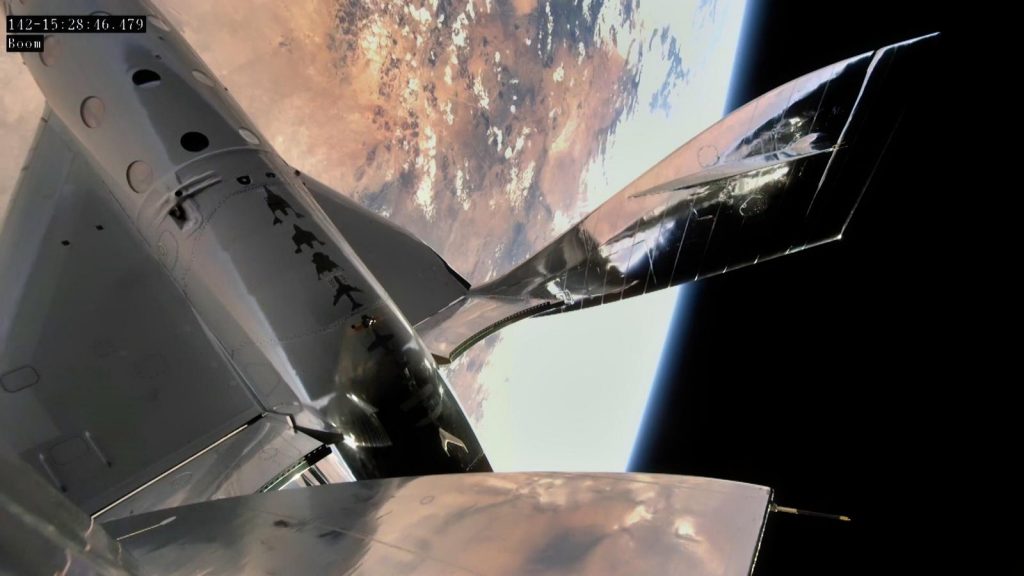
The carrier aircraft Virgin MotherShip Eve took off at 14:34 UTC with the Unity attached and began an hour-long climb to release altitude. At 15:26 UTC, the Unity was released to begin its rocket-powered climb to an altitude of 89.2 kilometres. The motor burned for 60 seconds before shutting down, which allowed the vehicle to coast. Apogee was reached six minutes later at 15:32 UTC. After the motor shut off, the vehicle moved its tailfin into the “feathered” re-entry position. The Unity touched back down at Spaceport America at 15:43 UTC.
Accompanying the two Virgin Galactic test pilots were two payloads from NASA. One of the payloads was APL sRLV Environment Monitoring System, also known as ASEMS. Launched under NASA’s Flight Opportunities program, this simple self-contained payload created by the Applied Physics Laboratory at Johns Hopkins University is intended to be rapidly deployed with commercial off-the-shelf electromagnetic field measurement devices for use on suborbital reusable launch vehicles. It weighs 5.5 kilograms — about three two-liter soda bottles — and contains a variety of electronics.
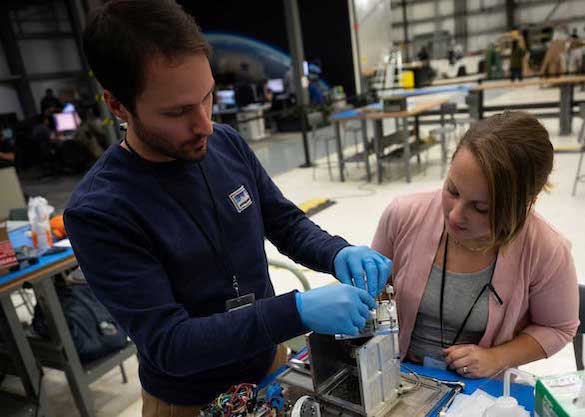
The other NASA payload was COLLIDE, which stands for COLLisions Into Dust Experiment. According to NASA, this “experiment is a modified version of the COLLIDE that was flown previously on two Space Shuttle missions.”
If you’ve ever played around with making your own craters by dropping balls into sand or flour, COLLIDE’s experiment will be familiar. COLLIDE will drop an impactor (a ball) into a tray filled with fine-grained target material (like sand) and use a video camera to record the whole thing. The data collected will help scientists understand how dust, such as lunar soil, behaves in low gravity environments. It will also be used to design equipment and science instruments on the Moon for future crewed missions.
Deep Dive
One of the many propellants you frequently hear me mention in different stories is hydrolox. Hydrolox is a combination of liquid hydrogen and liquid oxygen, which is slightly more hydrogen than oxygen in a typical mix to keep the temperature in the combustion chamber lower.
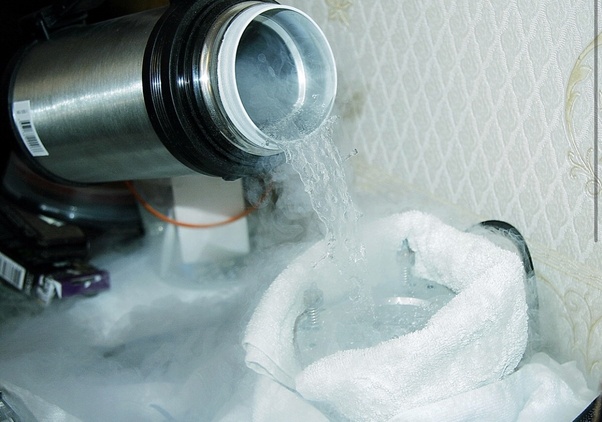
Hydrolox is considered the most efficient rocket propellant combination ever, with an average specific impulse of around 450 seconds. Average specific impulse is basically how much energy the fuel has per one unit of propellant, or how the rocket goes “brrr”. For comparison, kerolox engines use Rocket Propellant 1 (RP-1), a form of kerosene, and liquid oxygen. They have an average specific impulse in the mid 300s.
The Merlin 1D on SpaceX’s Falcon 9 uses RP-1/LOX. What this means is that you can get more velocity from the same amount of hydrolox propellant, because hydrogen molecules are very small and easy to accelerate quickly out of the throat of your rocket engine.
This sounds great, right? Well it’s more complicated than that. This is rocket science after all. The thing that makes hydrogen a good propellant, its small molecular size, also makes it really difficult to store. It simply doesn’t want to stay where you put it and will leak super easily.
The super-cold liquid hydrogen is also problematic to store in fuel tanks for long periods of time. Keep them filled for too long and the tank walls will become brittle and crack. This isn’t good for something that needs to survive the mechanical and thermal stresses of passing through the atmosphere at high speed, like a rocket going into space.
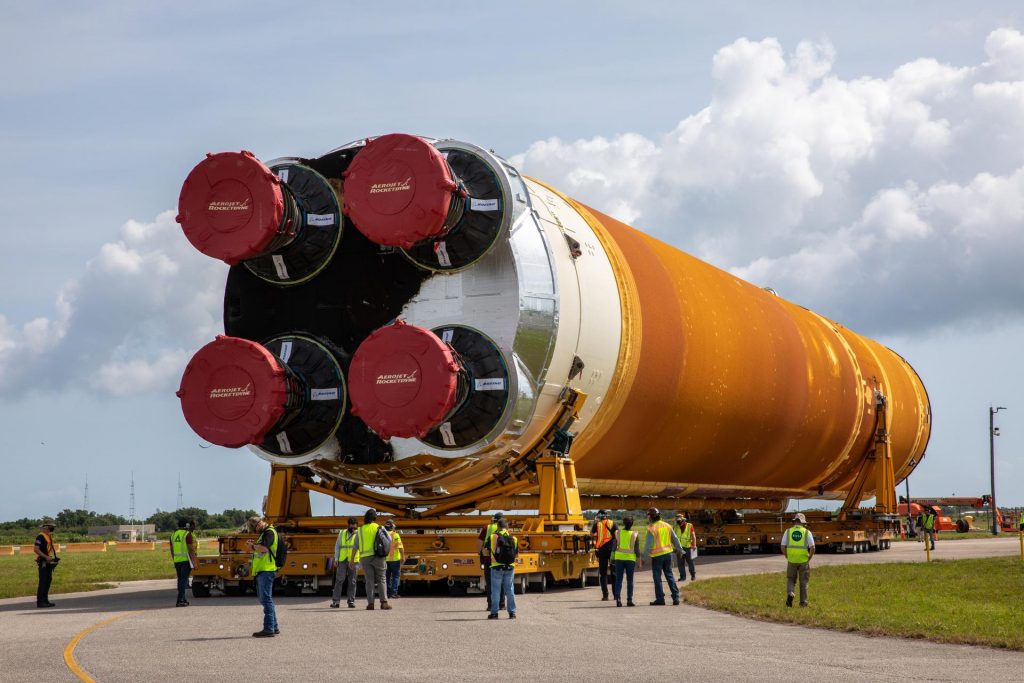
Special care is taken to load and empty liquid hydrogen from a rocket tank a limited number of times. The space shuttle external tank was only capable of thirteen fill and drain cycles and the Space Launch System Core Stage is capable of 22. This seems like a lot until you realize how much processing the SLS goes through that involves tanking and detanking. Remember, in early 2021 the SLS Core Stage was on the B2 test stand at Marshall doing its Green Run full duration hold down fire test. That test ended 67 seconds into a planned 480 seconds.
In post-test communication, NASA implied that the 67 second burn would have to suffice because the core stage could only be filled nine times and it had already been filled three times in previous testing. There were no more spare cycles left. The remaining cycles were reserved for further propellant testing at the launch pad and the launch itself. Later NASA confirmed that a second Green Run needed to be completed and in March 2021 a full 480 second Green Run was conducted with no apparent problems.
Another disadvantage to using hydrogen is it is very not dense. For such a small molecule, it takes up a whole lot of space. To hold rocket-usable amounts of it, you need a very large tank, which is why the SLS Core Stage and the Shuttle external tank are so large.
This Week in Rocket History

This week in rocket history we’re looking back at the first crewed mission to the USA’s first space station: Skylab 1. Or two, depending on who you ask. The first crewed mission to Skylab was originally called Skylab 1 and then retroactively changed to Skylab 2. Some sources still call it Skylab 1. The Rocket Roundup team was highly annoyed so to keep the confusion to a minimum, we’ll refer to it as the first crewed Skylab mission.
Skylab the space station was a converted Saturn V third stage fitted out on the ground and launched on another Saturn V. The original plan was to launch Skylab as an active “wet” workshop where it would launch as the second stage of the much smaller Saturn 1B rocket and insert itself into orbit and be converted to a space station there. Yes, that means they were going to fill the second stage with fuel and some internal bits, launch it into space, drain the remaining fuel, and convert the now-empty second stage to a space station on orbit.
After Apollo 18 through 20 were cancelled, the concept switched to a “dry” workshop launched on one of the now spare Saturn Vs.
Skylab was launched on May 14, 1973, and suffered some damage on the way up. During launch, the station’s micrometeoroid shield (which protects the pressurized space from impacts with debris) separated early. The errant shield took one of the two solar arrays with it. This caused a lot of problems, most importantly making the station too hot to enter safely, over 54 degrees Celsius or about 130 degrees Fahrenheit. All other aspects of launch were normal. The Apollo Telescope Mount with its smaller solar panels were deployed, giving the station a small amount of power. This was clearly a major problem, and NASA set to work on a repair to be implemented by the first crewed mission a week later.
This made that first crewed mission to the space station a very critical one.
In order to make the needed repairs, NASA first needed to know the extent of the damage. A highly classified National Reconnaissance Office Keyhole-8 (Gambit 3) film camera reconnaissance satellite was tasked with taking pictures of the damaged station to assist with the repair plan. The satellite was launched on May 16, Skylab was imaged on May 19t and the photo was returned to the ground (along with pictures of targets in the Soviet Union, its primary mission) on May 20.
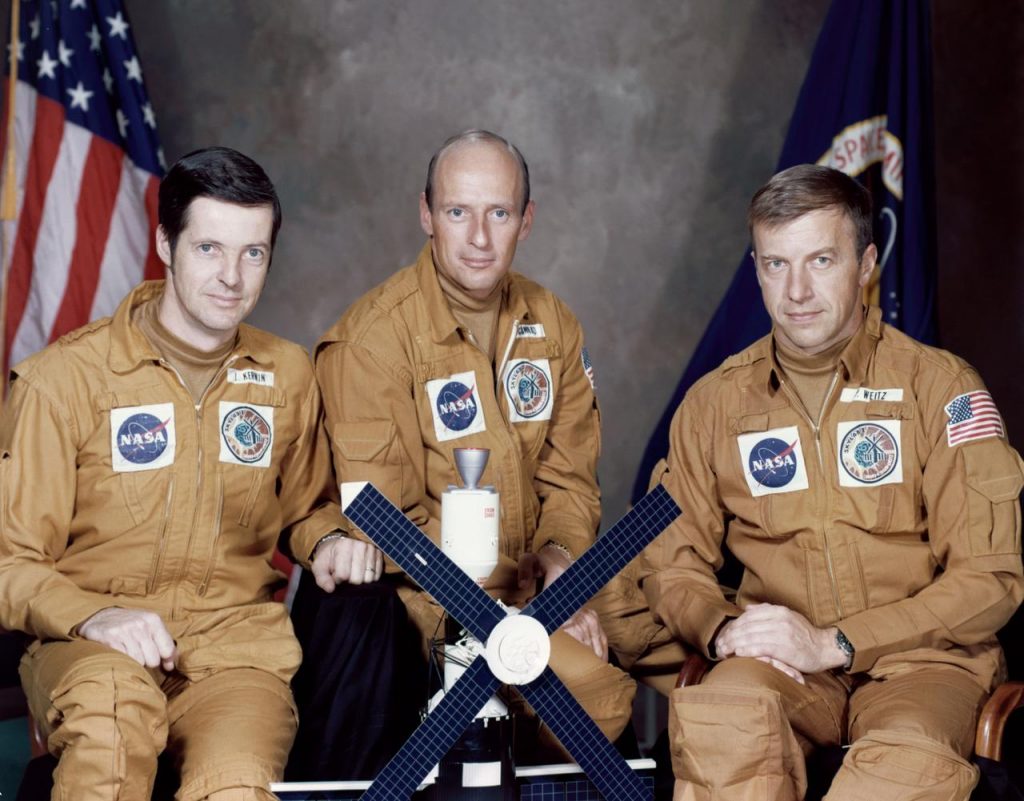
Following the rushed design and build of an expandable sunshade in seven days, the crewed Skylab mission was launched on May 25, 1973, at 13:00 UTC. The three crew members were Pete Conrad as Commander, Paul Weitz as Command Module Pilot (CMP), and Joseph Kerwin as Science Pilot. They launched in an Apollo Command Module carried to orbit on a two stage Saturn 1B. Because of the low Earth orbit destination and the capabilities of the launch vehicle, the Service Module was loaded with much less fuel than for a lunar mission.
The launch of the first crewed Skylab mission was nominal, and on its fifth orbit, it successfully rendezvoused with Skylab the space station. Command Module Pilot Weitz flew the Apollo around the station and inspected the damage before docking, which turned out to be very difficult — it took eight attempts to achieve a hard dock. As soon as they docked with the space station, it was time to get to work.
The crew attempted an Extra Vehicular Activity (spacewalk) to free the stuck solar panel with Weitz standing up in the Apollo and pulling on the debris that was keeping the solar panel stuck using a cable cutter on a three-meter pole while Conrad flew the spacecraft. This first attempt was unsuccessful.
The crew boarded the station, and on the second day of flight they absolutely had to do something about the temperature. Remember, it was over 54 degrees Celsius inside the station. So the sunshade was deployed by the astronauts from inside the station by using the science airlock in the Apollo Telescope Mount. Once the sunshade was finally deployed, the temperature in the module immediately dropped, at a rate of 18C or 64F per hour. It stabilized at a much more reasonable 23C (74F).
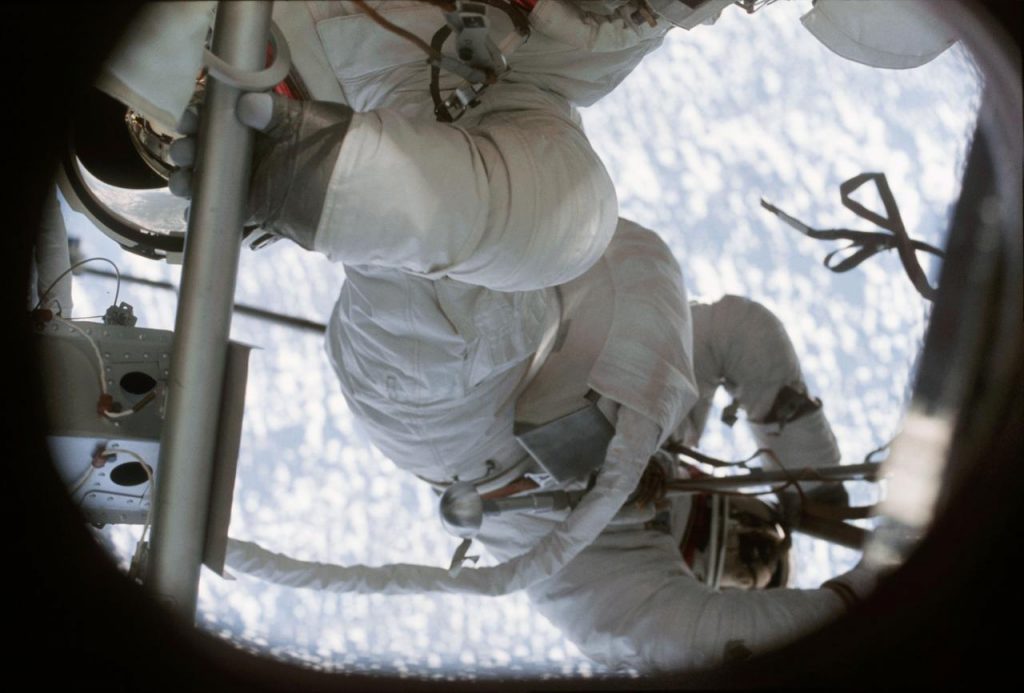
With the interior now at a comfortable temperature, the next step was to free the solar panel. This was successfully completed on the second spacewalk of the mission on June 7, which was conducted from the airlock onboard Skylab, a Gemini spacecraft hatch built into the structure. The EVA was not without problems, however, as Kerwin and Conrad found that the actual station differed from the mockup they had trained on, and at the moment the solar panel was freed, the two astronauts were flung off the structure by the force. They remained attached through their tethers, and the shaken astronauts were able to return to the inside of the station.
The rest of the astronauts’ 28 total days in space were much less eventful. On June 19, Conrad and Weitz performed the third and final EVA of the mission. This one was completely nominal: the two spacewalkers used handrails to move around and a pulley system to remove film canisters and space environment samples from around the module. They also cleaned the outside of one of the telescopes and performed percussive maintenance – yes, they hit it with a hammer – to reopen a stuck circuit breaker preventing all the power generated by the module from going to Skylab proper.
Altogether, the crew performed 392 hours of scientific experiments, including observing two major solar flares with the telescopes. They also conducted further investigations into the human body’s reaction to weightlessness, made possible by that vast, converted fuel tank that formed Skylab’s pressurized module. Some of the equipment included a rotating chair and a zero-g treadmill to gauge the ability of a human body to do physical work in space.
The Apollo capsule carrying the first astronauts to Skylab splashed down in the Pacific ocean 1,320 kilometers west of San Diego, California at 13:49 UTC on June 22, 1973. The USS Ticonderoga, an Essex class aircraft carrier, handled the recovery.
Statistics
To wrap things up, here’s a running tally of a few spaceflight statistics for the current year:
Toilets currently in space: 6: 3 installed on ISS, 1 on the Crew Dragon, 1 on the Soyuz, and 1 on Tianhe

Total 2021 orbital launch attempts: 45, including 2 failures
Total satellites from launches: 1046
I keep track of orbital launches by where they launched from, also known as spaceport. Here’s that breakdown:
USA: 19
China: 14
Kazakhstan: 4
Russia: 3
New Zealand: 3
French Guinea: 1
India: 1
Random Space Fact

Your random space fact for this week is that the smallest rocket to put something into orbit is Japan’s SS-520, a converted sounding rocket created by adding a third stage to the S-520 two stage sounding rocket. The SS-520 is 9.5 metres tall, half a metre in diameter and weighs 2.6 metric tons. Although the first launch of the SS-520 failed, the second launch succeeded in putting the three kilogram Tricom-1R cubesat into orbit on Feb 3rd, 2018, from Japan’s Uchinoura Space Center.
Coming Soon
Next week, all of CosmoQuest is taking a break to unwind a little bit over the long holiday weekend in the United States. There are still launches to cover for this week and a few to look forward to in the week to come.
There are several launches that will be happening over our break. As they will be happening in the future we can’t give a precise date and time right now. If you want to keep track of what’s going to launch when, we often use Rocket Launch Live to keep track of upcoming launches.
Learn More
SBIRS GEO-5 Launches
- Defense Support Program Satellites (U.S. Air Force)
- SBIRS-GEO info page (Gunter’s Space Page)
- Launch video
China Sends Up Ocean Monitoring Satellite
- CASC press release
- Haiyang 2 info page (Gunter’s Space Page)
- What is Scatterometry? (The Florida State University)
- Scatterometry (NASA JPL)
- Launch video
VSS Unity Succeeds at Suborbital Flight
- Virgin Galactic press release
- PDF: Electromagnetic field measurements on Suborbital Reusable Launch Vehicles (NASA)
- PDF: COLLIDE: Collisions Into Dust Experiment (NASA)
- Collisions Into Dust Experiment on a Commercial Suborbital Vehicle (NASA)
- Flight video
Deep Dive: Why We Use Hydrolox Fuel
- Rocket Propellants (Robert A. Braeunig)
- Lox/LH2 (Astronautix)
- Lox/Kerosene (Astronautix)
- Falcon 9 info page (SpaceX)
- NASA analysis of shuttle fuel tank enters final stages (Spaceflight Now)
- Green Run Update: Hot Fire Met Many Objectives, Test Assessment Underway (NASA)
- Green Run Update: Data and Inspections Indicate Core Stage in Good Condition (NASA)
- Green Run Update: Engines Igniting as Hot Fire Gets Underway (NASA)
This Week in Rocket History: Skylab 2
- Concept to Design: Defining the Workshop (NASA History)
- Chapter 5: Years of Uncertainty, 1967-1969 (NASA History)
- Skylab 2: “We can fix anything!” (NASA)
- Those magnificent spooks and their spying machine: The spies help rescue Skylab (The Space Review)
- More Details for 1973-05-26 (Astronautix)
- Skylab 2 (Astronautix)
- Skylab 2 (Space Facts)
Random Space Fact: Smallest Orbital Rocket
- Smallest orbital rocket (Guinness World Records)
- SS-520-5 Rocket Sets GUINNESS WORLD RECORDS™ (JAXA)
Credits
Host: Annie Wilson
Writers: Elad Avron, Dave Ballard, Gordon Dewis, Pamela Gay, Beth Johnson, Erik Madaus, Ally Pelphrey, and Annie Wilson
Audio and Video Editing: Ally Pelphrey
Content Editing: Beth Johnson
Executive Producer: Pamela Gay
Intro and Outro music by Kevin MacLeod, https://incompetech.com/music/


 We record most shows live, on Twitch. Follow us today to get alerts when we go live.
We record most shows live, on Twitch. Follow us today to get alerts when we go live.